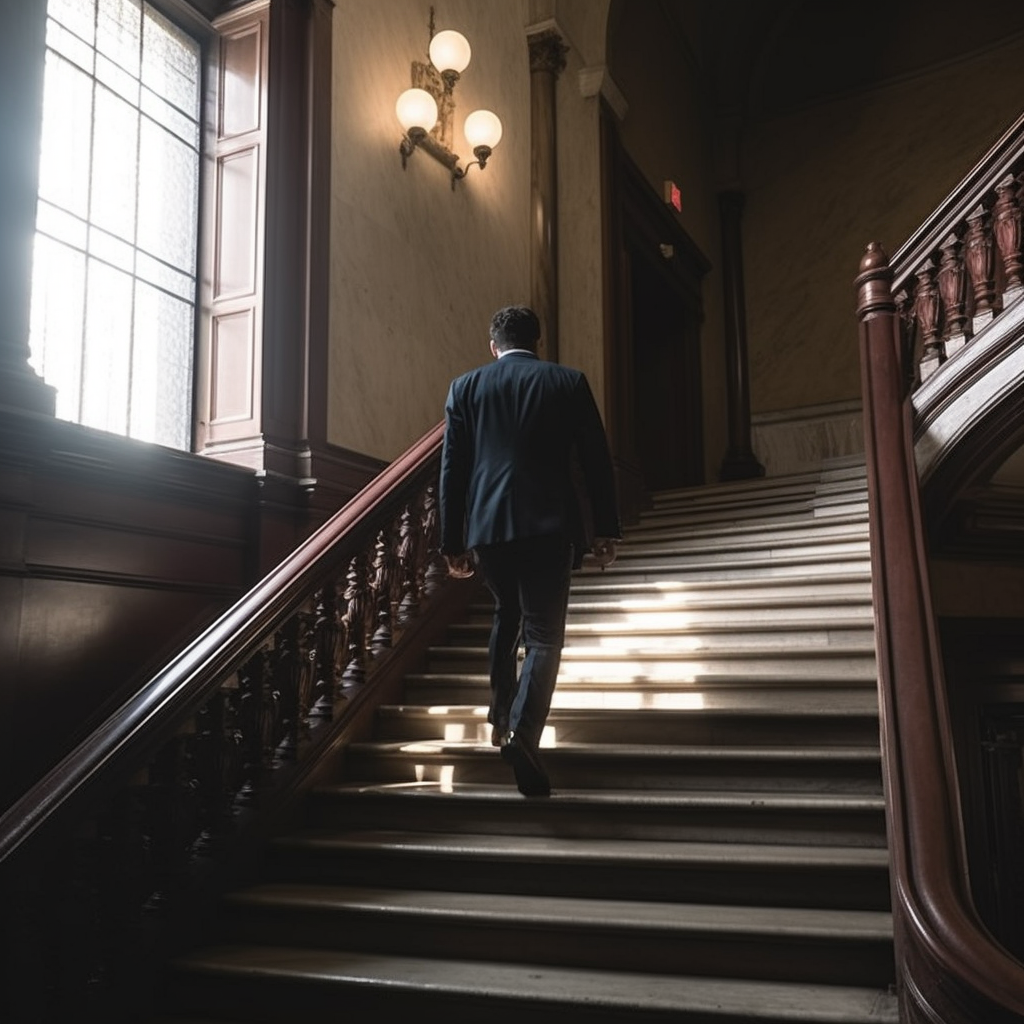Table of Contents
Pattern jury instructions, or PJIs, help standardize the guidelines that jurors apply to the facts of a case as they deliberate and render a verdict. Given the role that these instructions play in directing the thought process of each juror, one can safely say that your PJI strategy is vital to the outcome of a client’s case.
As trial attorneys, you have the opportunity to file written requests for how the judge in your case should ideally instruct the jury, typically at the close of evidence. Knowing how this intricate process works, the nature of the PJIs that an attorney should request for the jury, and how to properly object to inappropriate jury instructions, requires partnering with an experienced trial litigation firm. That firm is Voldz Law.
Purpose of Pattern Jury Instructions
While lawyers are trained to decipher the verbiage used in personal injury statutes and opinions, we often forget how complicated these are for the average layperson. Yet, it is precisely such a person who sits on a jury and decides the fates of the plaintiff(s) and defendant(s), who must understand the nuances of a complex suit.
This is where pattern jury instructions come in. They are used in both criminal and civil cases to guide jurors on how to interpret the relevant statutes in light of the evidence admitted in court. PJIs facilitate the efficient operation of the court system by defining the issues in the case, explaining the applicable legal principles and processes that juries must use to decide those issues, and protecting the rights of the parties to a fair trial. More specifically, the purposes of PJIs include:
Informing jury members about the law: Most jurors are inexperienced with the minutiae of civil statutes, which are often confusingly worded and sometimes riddled with esoteric jargon. Since a jury must apply the law, it is imperative that each member has a proper understanding of what that law is.
Directing attention to the relevant statutes: While a juror may have some understanding of general negligence laws, they will need to focus on the specific statutes (including procedural laws) that are invoked at trial if they are to render a proper verdict. Jury instructions assist with this.
Preventing misinterpretations: Merely reading a statute does not help one understand its full meaning, since every individual can interpret a legal provision differently. PJIs help avoid misinterpretations so that the jury applies the correct legal standards to the facts of the case.
Assisting with complex negligence cases: Certain cases, such as those involving rear-end collisions, center around complex questions of law and fact. For instance, did the defendant driver stop suddenly and without reasonable cause? Was the defendant’s texting while driving the sole cause of the accident? With PJIs, the jurors can more fully appreciate each fact-in-issue and whether it has been established in court by the evidence.
Ensuring uniformity: While all parties to the case are entitled to equal justice, differing interpretations of statutes could undermine this right. The use of PJIs can ensure a fair, uniform application of negligence laws.
Minimizing the need for appeals: If a jury does not correctly understand the law and misapplies it, this could be grounds for an appeal. PJIs reduce the number of appeals, thereby saving time, money, and court resources for everyone involved.
What Are the Elements Of a Charge?
Just instructions are written to address the following elements:
- Who are the parties and what is their relationship to the litigation? Jurors may not appreciate the distinction, for instance, between a defendant and a third-party defendant. Without this understanding the jury may be confused and end up applying the incorrect legal principles to the case.
- What are the parties’ respective contentions? The court should present a balanced and objective statement encapsulating the parties’ respective arguments and positions in the case. The charge must properly incorporate the parties’ factual contentions with respect to the applicable legal principles.
- What are the issues raised by those contentions? Mere statements of the law in abstract terms, applicable to any case, are insufficient even though they may be accurate. Specificity is essential because it links the parties’ contentions to the relevant law.
- What must the jury find to prevail? The court should inform the jury, under the governing law, what the jury must find for a party to prevail. Instructions are only adequate if they present the pertinent legal principles that the jury must apply, along with the factual issues the jury must resolve.
- What is the process that the jury must use to make their decision? This includes the applicable burden of proof, the legal effect of the court’s denial of motions, and cautions regarding prejudice, sympathy, and outside influences.
- How to compute damages? The jury must understand the correct way to calculate damages in a New York personal injury lawsuit. Inaccurate calculations can jeopardize the plaintiff’s award and/or form the basis for the defendant’s appeal.
- What is the form of the verdict? The court has discretion whether to use special verdicts, which is increasingly common and appropriate in tort actions. They are particularly useful in cases that involve multiple theories of liability, multiple parties, complicated facts and issues, or, in general, if they would help the jury better understand how to reach a verdict.
- Other points: The PJI should include all theories of liability that are supported by evidence. A careful trial attorney will not present several theories to the jury if the evidence only supports one of them. Additionally, the jury must not be deprived of the prerogative to decide issues on which there are questions of fact. Lastly, there are certain matters not appropriate for the jury’s deliberation, such as the fact that a party dismissed a claim.
How to Submit Proposed Civil Jury Instructions
If you are representing the victim in a New York City personal injury lawsuit, our goal is to help you prepare for that lawsuit. That is why so many trial attorneys partner with our firm to help secure favorable verdicts for their clients. The New York PJI General Principles for Civil Cases recommends the following:
- Use language that is easily understandable to a jury: Avoid ambiguous, confusing, or inadequate statements of law. Also, avoid “legalese” and jargon, and explain any technical terms you must use. The average jurist may not know what “vicarious liability” is, nor what “res ipsa loquitur” means.
- Include the exact charge, and only list factual issues specific to the case: Don’t include charges that aren’t supported by the evidence you have. You want to be precise; general statements can confuse the jury or muddle the facts of the case.
- Incorporate all relevant factual contentions of the parties: The charge should incorporate the evidence, relate that evidence to the specific legal principles, and then apply each party’s claims of fact.
-
- Explain all governing rules impartially.
- State that the court must identify any testimony that is admitted, and if there are limits to that testimony.
- Do not instruct the jury that if they believe certain witnesses or evidence, they must reach a certain result.
- Do not charge that the evidence presented is enough to definitively sustain a verdict for either side (though you can state no evidence exists for a specific issue in fact)
-
You must explain that a jury can discredit the testimony of non-expert witnesses, even if that testimony (or witness) is uncontradicted or unchallenged. Note that, however, a jury cannot arbitrarily reject an expert witness’ opinion without testimony, cross-examination, or careful consideration of evidence. If the court rebukes opposing counsel for prejudicial or erroneous remarks during jury summation, adjust your jury instructions accordingly.
How to Present Requests to Charge
You should have the chance to present requests to charge before summation. Typically, all requests to charge are made at the close of the evidence or earlier, if the court determines it is appropriate. Any discussions concerning the instructions must be clearly recorded for effective appellate review (if necessary) and discernment of the parties’ positions and the court’s decision.
If a court misunderstands your meaning in your request to charge, it is your responsibility to alert the court to this misapprehension. If a substantial change is made to the charging document, the court will either advise the opposing counsel of that change before the jury summation, or give counsel a chance to reopen jury summation in regards to that change.
You must be specific while objecting to the charge; otherwise, the issue may not be properly preserved for appeal. Failure to request additional instructions or clarification of those instructions can also lead to non-preservation or abandonment of the claim of error.
What Happens If a Jury Has Questions?
If a jury asks for the charge to be re-read, they do not have to specify any parts in particular that have led to the request; the court, however, may ask the jurors about their requests. If a jury asks for further instruction or to review exhibits, the court must either summon counsel for both parties, or be given consent by counsel to speak with the jury without counsel present.
It is important to keep in mind that the verdict will be set aside if an unauthorized communication between court officers and jurists interferes with the jury’s ability to deliberate about the case.
What to Note During the Verdict Stage
A jury’s verdict must be “perfected.” Perfection requires announcing and recording the verdict in open court. Remember, either party has an absolute right to “poll” the jury, and if such a request is made, the court must comply, else it puts itself at risk of a reversible error. (note that this right can be waived by either party, too.) Typically, there are three grounds for setting aside a verdict:
- It is not supported by legally sufficient evidence;
- it is contrary to the weight of the evidence; or
- it is in the interest of justice to set it aside.
Role Of a Trial Attorney In Civil PJIs
Attorneys study the details of personal injury cases and thereby determine the exact language of the jury instructions to propose. They also recognize that the wording of instructions can potentially mislead jurors or bias them against the plaintiff. With that concern in mind, plaintiff’s counsel is always prepared to modify the PJIs and object to those that the defendant’s counsel recommends. Through this meticulous process, the plaintiff’s attorney works to ensure that jurors use accurate PJIs in their deliberations. Moreover, the careful litigator will properly preserve objections on the record, pending the need for an appeal.

Want To Learn More About New York PJIs? Connect With an Experienced New York City Trial Attorney
Pattern jury instructions ultimately shape the outcome of a personal injury lawsuit. This means either the plaintiff will be able to walk away with a favorable verdict, backed by sound legal reasoning and aided by carefully worded instructions, or the defendant will be able to identify errors that could allow them to prevail at the trial or appellate level.
If you are a New York personal injury firm seeking to strengthen your case, you can benefit from our legal counsel. Find out how to achieve this objective by working with Gennady Voldz. Connect with us today to get started.



